Rockefeller collection of furniture & decorative arts to highlight Sotheby's 2019 Americana Week
Property from the Collection of Nelson & Happy Rockefeller. The Meissen Swan service, 18th century. Courtesy Sotheby's
NEW YORK, NY.- Sotheby’s unveiled highlights from A Collecting Legacy: Property from the Collection of Nelson & Happy Rockefeller on 18 January, as part of their 2019 Americana Week auctions in New York. This special offering follows the success of the November and December 2018 auctions of works from the couple’s collection. Jewels from Happy’s personal collection were sold in the 4 December auction of Magnificent Jewels, while a dedicated sale on 13 November offered important 20th century design, impressionist & modern and contemporary art. Titled A Modernist Vision, this exceptional group was in part the result of Nelson Rockefeller’s commission of an original interior from designer Jean-Michel Frank, who filled Nelson’s distinguished 810 5th Avenue apartment with his unique designs, as well as those of celebrated artist-designers Alberto Giacometti and Christian Bérard.
Led by 16 pieces from the celebrated Meissen ‘Swan’ service and important Chinese export ceramics, the January sale will offer a remarkable array of the couple’s furniture and decorative objects, including silver, Americana, books & manuscripts, Chinese and Japanese works of art and prints, and modern and contemporary art, showcasing in its entirety Nelson and Happy Rockefeller’s worldly vision and eclectic spirit, while providing an intimate glimpse into how the couple lived with these timeless objects.
Works from the sale will be on view in Sotheby’s York Avenue galleries beginning 11 January, alongside the 2019 Americana Week auctions.
Passionately assembled with wide-ranging interests and an unwavering eye for quality, the collection of Nelson and Happy Rockefeller is not only tied to one of America’s most storied families, but is also a significant and pioneering collection in and of itself, expressing, as Nelson himself once stated, “the spirit of the time” in which they lived.
AUCTION HIGHLIGHTS
The January sale is anchored by a remarkable suite of 16 pieces from the renowned Meissen ‘Swan’ service, led by a Pair of Meissen Monteiths circa 1740-41 (estimate $150/250,000).
The Meissen ‘Swan’ service has gained its highly covetable status amongst collectors, academicians and enthusiasts with its timeless beauty, masterful modeling and distinguished provenance. Equally importantly, the service originally comprising over 2,200 pieces also attests to the prestigious use of porcelain on aristocratic tables by the second quarter of the 18th century, replacing silver services.
The service, with its numerous dinner and dessert service shapes, was commissioned in 1736 by German statesman Count Heinrich von Brühl (1700-63), who later became the Director of the Royal Porcelain Factory at Meissen. Bearing the coat of arms of von Brühl and his wife, Maria Anna Franziska Kolowrath-Krakowski, the lavish set was completed in 1742 and was presumably the ultimate status symbol for von Brühl, who was known for his extravagant official festivities while also promoting the abilities of the factory under his direction. While the service remained in the family’s possession until the late 19th century, from 1880 pieces were lent to museums in Dresden and Berlin or passed to collectors, so that by 1900 only 1,400 pieces remained. These works were dispersed or possibly destroyed at the end of the Second World War, presenting collectors today with a rare opportunity to acquire numerous pieces from the renowned service, including a Wärmeglocke (estimate $50/70,000), Wine-Bottle Holder (estimate $30/50,000) and a trio of Large Circular Dishes (estimates from $25/50,000).
Lot 356. A pair of Meissen Monteiths from the Swan service, circa 1740-41; width across handles 15 3/4 in.; 40 cm. Estimate $150,000 - $250,000. Lot sold $212,500. Courtesy Sotheby's.
modelled by Johann Friedrich Eberlein, the oval body molded in low relief with spirally radiating shellwork, and applied on either side in the center with a gilt rocaille cartouche painted with the Brühl and Kolowrat-Krakowska arms, affixed on either end with a half-bust nymph suspending on either side a garland of flowerheads, fruit, crayfish and shells, the rim with upright gilt scallop shells modeled with cascades of water serving as lugs, crossed swords marks in underglaze-blue, impressed numerals 23 or 25(?) 2 pieces.
Provenance: One, sold, Sotheby's, London, February 22, 1966, lot 80
The Antique Company of New York, Inc., November 1969.
Note: Eberlein's work records from July 1740 state: '1 großen Eißtopf für Exc. Brühl ganz wie eine Muschel mit 2 Henkeln won Sirenen, 2 Schildern un oben with 8 Muscheln besetzt.' [An ice pot (monteith) for his Exc. Brühl much like a shell with 2 handles as Sirens, 2 devices and on top affixed with 8 shells.], referenced in Ulrich Pietsch (ed.), Schwanenservice - Meissener Porzellan für Heinrich Graf von Brühl, Leipzig, 2000, p. 170.
Similar examples are found in the Dresden Porzellansammlung (Inv. no. P.E. 1418, published by Pietsch, ibid, pp. 169-70, no. 45), and another, undecorated, (Inv. no. P.E. 3703); the Dr. Schneider Collection, Schloss Lustheim in Munich, undecorated (Inv. no. ES 1577) and the Grassimuseum in Leipzig (Inv. no. 1911.92.).
Similar examples at auction include those sold at Sotheby's, London, November 28, 1961, lots 152-153; Sotheby Parke Bernet, March 12, 1968, lot 119; Sotheby's, London, April 11, 1972, lot 193; Christie's, London, July 10, 2007, lot 147 and June 4, 2013, lots 22-23.
Lot 357. A Meissen Wärmeglocke from the Swan service, circa 1737-41; diameter 10 7/8 in; 27.5 cm. Estimate $50,000 - $70,000. Lot sold $118,750. Courtesy Sotheby's.
modelled by Johann Friedrich Eberlein, the domed cover molded in low relief with a crane in flight above two swans and a crane amidst waves and rushes against a ground of spirally radiating shell-work, on either side with a molded gilt rocaille cartouche painted with the Brühl and Kolowrat-Krakowska arms, applied with scattered shells and leafy flower sprigs, set with a gilt bronze handle, unmarked.
Provenance: The Antique Company of New York, Inc., January 1969.
Lot 358. A Meissen Wine-Bottle Holder from the Swan service, circa 1737-41; width 9 1/4 in.; 23.4 cm. Estimate $30,000 - $50,000. Lot sold $75,000. Courtesy Sotheby's.
Provenance: The Maurice de Rothschild Collection, his (anon.) sale, Christie's London, March 28, 1977, lot 7.
Ulrich Pietsch (ed.), Schwanenservice - Meissener Porzellan für Heinrich Graf von Brühl, Leipzig, 2000, p. 169 cites Eberlein's work records in November 1741 for this form as follows: 'Einen Korb zu den Burgunder Bouteillen, mit dem Schwanendessin für Brühl' [A basket for the Burgundy bottles with swan designs for Brühl]. Pietsch also mentions that the form has historically been referred as both a vessel for grapes and a bottle holder, but the open base and Eberlein's distinct description in his work record suggest its correct function as being a bottle holder.
Similar examples are found in the Dresden Porzellansammlung (Inv. no. PE 1414, published by Pietsch, ibid, pp. 168-69. no. 44), the Dr. Schneider Collection, Schloss Lustheim in Munich (Inv. no. ES 84 and ES 85), the Metropolitan Museum of Art in New York (Inv. nos. 50.211.235 and 50.211.236) and the Stockholm Nationalmuseum (Inv. no. NMK 101/1964).
Similar examples at auction include those sold, Sotheby's, London, June 26, 1956, lot 120; Sotheby's, Geneva, November 9, 1987, lot 89; Dr. Roy Byrnes Collection, California, Christie's London, May 12, 2010, lot 79; Mr. and Mrs. Saul P. Steinburg Collection, Sotheby's, New York, May 26, 2000, lot 29, previously sold, Christie's, London, July 3, 1989, lot 26; and most recently two examples sold at Christie's, London, June 7, 2013, lot 367.
Lot 359. A Meissen Large Circular Dish from the Swan service, circa 1738-41; diameter 15 in.; 38.2 cm. Estimate $30,000 - $50,000. Lot sold $40,000. Courtesy Sotheby's.
modelled by Johann Joachim Kändler, in low relief with two swimming swans among bulrushes with a crane in flight above, upon a spiral shell molded ground, the rim painted with the Brühl and Kolowrat-Krakowska arms and scattered flower sprigs, with a gilt border to the rim, crossed swords mark in underglaze-blue, incised numeral 4 near edge of footrim, impressed Dreher's mark of two dots inside footrim
Provenance: The Antique Company of New York, Inc., January 1969
Lot 360. A Meissen Large Circular Dish from the Swan service, circa 1738-41; diameter 13 1/4 in.; 33.8 cm. Estimate $25,000 - $35,000. Courtesy Sotheby's.
modelled by Johann Joachim Kändler, in low relief with two swimming swans among bulrushes with a crane in flight above, upon a spiral shell molded ground, the rim painted with the Brühl and Kolowrat-Krakowska arms and scattered flower sprigs, with a gilt border to the rim, crossed swords mark in underglaze-blue, incised III to inside footrim, impressed Dreher's mark to edge of footrim.
Note: Sotheby’s Scientific Research department used noninvasive XRF for this lot to screen the green enamel for chromium, which was not detected.
Lot 361. A Meissen Large Circular Dish from the Swan service, circa 1738-41; diameter 113 3/8 in.; 34 cm. Estimate $25,000 - $35,000. Courtesy Sotheby's.
modelled by Johann Joachim Kändler, in low relief with two swimming swans among bulrushes with a crane in flight above, upon a spiral shell molded ground, the rim painted with the Brühl and Kolowrat-Krakowska arms and scattered flower sprigs, with a gilt border to the rim, crossed swords mark in underglaze-blue, incised III to inside footrim, impressed Dreher's mark to edge of footrim.
Note: Sotheby’s Scientific Research department used noninvasive XRF for this lot to screen the green enamel for chromium, which was not detected.
Two Extremely Rare and Important Chinese Export Armorial Goose-Form Tureens and Covers for the Spanish Market, Qing Dynasty, Qianlong Period, circa 1775 lead the wide range of Chinese export ceramics on offer. The Negrete goose tureen is distinguished by the initials JCN, for Juan del Castillo Negrete, which are unusually marked on the base of pieces from this particular service (estimate $150/250,000). The arms that adorn the Gálvez tureen are those of José de Gálvez y Gallardo, the first Marquis of Sonora (estimate $120/180,000). The inscription on the work reads ARMAS DELEX MOSE NORGALVEZ, but it instead should read ARMAS DEL EXMO SENOR GALVEZ, or “The Arms of his Excellency Senor Gálvez” – an error by the Chinese artist in copying the handwritten instructions that accompanied the commission.
Lot 322. An extremely rare and important Chinese Export Armorial goose-form tureen and cover for the Spanish market, Qing dynasty, Qianlong period, circa 1775; height 14 7/8 in.; 37.9 cm. Estimate $150,000 - $250,000. Lot sold $225,000. Courtesy Sotheby's.
naturalistically and boldly modeled in two sections, the raised head supported by a long curving neck, the body finely enameled with sepia and purple plumage, the folded wings molded with overlapping feathers in green, yellow, iron-red, pink and en grisaille with details picked out in gilt, the pink enameled webbed feet tucked under the body, the arms of Juan del Castillo Negrete y Rodríguez painted on the back between the wings, and the base marked with the initials JCN.
Provenance: Christie's London, June 19, 1967, lot 64
J. Rochelle Thomas, New York
Acquired from the above on February 13, 1969, in exchange for two Chinese export goose tureens.
Literature: Christie's Review of the Year, October 1966- July 1967, London, p. 2.
Note: Armorial goose tureens are exceptionally rare. Goose tureens, in general, have frequently been celebrated as one of the most spectacular and recognizable forms of Chinese porcelain made for the West. Intended to be extravagant centerpieces for table settings, fashionable in Europe in the 18th century, geese, along with roosters, quail, fish, boar’s heads, ox heads and crabs (examples of the last two are also represented in the Rockefeller collection and included in this sale) are other recorded examples of animal or bird shaped tureens used for such displays. While the exact prototype for goose tureens is not known, scholars usually attribute the Chinese porcelain examples to European originals. As discussed in David Howard and John Ayers, China for the West, Vol. II, London, 1978, cat. no. 615, and also Michael Cohen and William Motley, Mandarin and Menagerie: Chinese and Japanese Export Ceramic Figures, Reigate, 2008, cat. no. 18.1, Adam von Löwenfinck, the original director of Höchst, faience factory who later joined Strasbourg in 1749, likely supervised the creation of goose, turkey and pigeon tureens at that factory between 1750-54. J. J. Kändler, the most important modeler at Meissen, was also known to have created large bird models.
Western influences aside however, it is also worth noting that goose or waterfowl-form boxes and covers were not at all unfamiliar in the Chinese artistic tradition, especially in wares for ritual and incense use. Cohen and Motley discusses Han dynasty avian form boxes and covers and also later cloisonné and bronze examples, ibid, cat. no. 18.1. A gilt-bronze duck-form incense burner and cover, mark and period of Xuande, was sold in our Hong Kong rooms, April 8, 2014, lot 85. This example, cast as standing on a hexagonal pedestal, closely relates to a celebrated Chenghua mark and period Sancai duck-shaped censer, illustrated in A Legacy of Chenghua: Imperial Porcelain of the Chenghua Reign Excavated from Zhushan, Jingdezhen, The Tsui Museum of Art, Hong Kong, 1993, cat. no. C34, where the author notes that the Chenghua emperor was very fond of ‘ingenious creations’ and thus this porcelain censer example would suit his taste. The transition between metal and porcelain mediums represents a great challenge to potters, as each material has varying strengths and weaknesses. While porcelains are not able to replicate the hard and clean edges of cast metal examples, the colorful enamels that adorn these pieces provided very capable artisans a new ‘canvas’ for an updated interpretation of a traditional form with ritual roots.
There appear to be two distinct models of goose tureen produced in China in the 18th century; one variety with a shorter neck and a longer body, as illustrated in Howard and Ayers, ibid., cat. no. 614, and the other model virtually identical to the present two lots with a more elegant and curving neck and shorter body. It is well-known that the V.O.C. ordered twenty-five goose tureens in 1763 for stock, as discussed in David Howard, A Tale of Three Cities: Canton, Shanghai & Hong Kong, London, 1997, cat. no. 78. Decoration of goose tureens also differs from example to example, however the major distinction is the existence of coats of arms on some tureens, with these armorial examples being much rarer. Aside from the two present tureens, four other armorial examples appear to be published. The first, a goose tureen complete with stand, bearing the arms of the Basque family of Asteguita, is illustrated in William R. Sargent, Treasures of Chinese Export Ceramics from the Peabody Essex Museum, Salem, 2012, cat. no. 206, and was previously sold at Christie’s London, March 16, 1981, lot 68, and included in The Art of the Qing Potter: Important Chinese Export Porcelain, The Chinese Porcelain Company, New York, October 1997, cat. no. 49. A second example with the arms of Corral family, was sold at Christie’s London, November 11, 2003, lot 164, having previously sold in our London rooms, May 24, 1964, lot 145. A third example, with the arms of Cervantes, is illustrated in Rocío Díaz, Chinese Armorial Porcelain for Spain, London, 2010, cat. no. 26. A fourth, with the arms of Domingo Esteban de Olza, illustrated in Rocío Díaz, ibid., cat. no. 36. David Howard suggests that most animal form tureens bearing coats of arms were made for the Spanish and Portuguese market.
This goose tureen appears to have been part of a grand service or suite of serving pieces. For examples of the service and a biography of Juan del Castillo Negrete y Rodríguez, see Rocío Díaz, Chinese Armorial Porcelain for Spain, London, 2010, cat. no. 38. The author notes that the initials JCN, for Juan del Castillo Negrete, are very unusually marked on the bases of the pieces from this service. Several examples survive from this service, including a pair of carp tureens and stands, an oval sauce tureen, a pair of oval soup tureens, a mancerina and beaker in the collection of The Museu Nacional de Art Antiga in Lisbon, as well as various plates and dishes in differing sizes.
Arms of Juan del Castillo Negrete y Rodríguez.
Lot 323. An extremely rare and important Chinese Export Armorial goose-form tureen and cover for the Spanish market, Qing dynasty, Qianlong period, circa 1775; height 15 in.; 38.1 cm. Estimate $120,000 - $180,000. Lot sold $200,000. Courtesy Sotheby's.
naturalistically and boldly modeled in two sections, the raised head supported by a long curving neck, the body finely enameled with sepia plumage, the folded wings molded with overlapping feathers in green, iron-red, rose, and crimson, with details picked out in gilt, the webbed feet tucked under the body, the arms of José de Gálvez y Gallardo painted on the chest within a circular reserve.
Provenance: Collection of Mme Espirito Santo, Lisbon
Heirloom & Howard, February 1976.
Literature: Ricardo Espirito Santo Silva, J. A. Lloyd Hyde and Eduardo Malta, Chinese Porcelain for the European Market, Lisbon, 1956, pl. VII and on dust-jacket.
Michel Beurdeley, Porcelain of the East India Companies, London, 1962, pl. XVII.
Mary Salgado Lobo Antunes, Porcelanas da China - Chinese Porcelain, Colecção Ricardo do Espírito Santo Silva, Lisbon, 2000, p.68.
Note: The arms that adorn this tureen, first identified by Michel Beurdeley, are those of José de Gálvez y Gallardo, 1st Marquis of Sonora. Beurdeley notes that even though the Madrid Museums have few Chinese export wares, two examples from the collection enabled him to identify the armorial. The inscription on the tureen reads ARMAS DELEX MOSE NORGALVEZ, but it instead should read ARMAS DEL EXMO SENOR GALVEZ, which translates to (The Arms of his Excellency Senor Galvez). This is an unintentional mistake of the Chinese artist in copying the handwritten instructions that accompanied the commission. Instances of such mistakes are rare, however, many have been documented by Shirley M. Mueller, ‘Chinese Export Porcelain Curiosities’, Oriental Art, Vol. XLVI No. 1, 2000, pp. 16-27, including notable examples such as the Dobree service on which the name of the colors of the coat of arms were erroneously copied directly onto the finished service, and also the Haldane service, on which the entire bookplate border was copied meticulously onto the porcelain.
Arms of José de Gálvez y Gallardo.
Further highlights include an Extremely Rare and Important Pair of Large Chinese Export Figures of a Jewish Man and Lady, Qing Dynasty, Qianlong Period (estimate $100/150,000). The present pair has historically been known as ‘Dutchman and Dutch Lady’, or ‘Mr. and Mrs. Duff’, however, this attribution has been repositioned recently following the discovery of two European prints entitled ‘Franckfurther Jud und Jüdin’ and ‘Ein Polnischer Jud’. The two prints were etched by the Dutch artist Caspar Luyken (1672-1708) and illustrated in the Neu-eröffnete Welt-Galleria (The Newly Opened World Gallery) in 1703, which consists of 101 costume plates ranging in the depiction of nobility to everyday people of various nations. The figures depicted are wearing typical Ashkenazi Jewish garments, including the collar ruffs, the bonnet with cone-shaped ears worn by the woman, and the long robe, large broad brimmed hat and draped sash worn by the man. There appear to be two other pairs of a Jewish man and lady published: the first is from the Copeland Collection at the Peabody Essex Museum, Salem, Massachusetts, and the second from the Hodroff Collection at Winterthur Museum, Garden & Library, Winterthur, Delaware.
Lot 321. An extremely rare and important pair of large Chinese Export figures of a Jewish man and lady, Qing dynasty, Qianlong period, 1735-45; height of taller 17 1/8 in.; 43.5 cm. Estimate $100,000 - $150,000. Lot sold $300,000. Courtesy Sotheby's.
each figure delicately modeled and decorated in rich and bright enamels, the man with left arm raised and outstretched, the face with a curling mustache and a long forked beard, the hair draped on the back over the light-turquoise ruff and all surmounted by a black broad-rimmed barrette, the body with an ankle-length aubergine overcoat decorated with floral roundels en grisaille with bright yellow lining, over a long blue robe painted en grisaille with mons and tied at the waist with an iron-red belt with a patterned sash, possibly a tallit, hanging on right side, the feet with short black boots; the lady with arms lowered on both sides, the freckled face with red lips slightly curving upwards forming a smile, the head with a distinctive light-turquoise cone-shaped winged bonnet with a large pleated ruff around the neck, all above a flowing blue cape with pink lining decorated with scrolling clouds, underneath it yellow and green bodice, with long full turquoise sleeves and apron all above a pink skirt with the pointed shoes peeking out from underneath.
Provenance: Man:
Collection of Mrs. Charles R. Blyth
Sotheby Parke Bernet Los Angeles, October 13-15, 1975, lot 197
Lady:
Collection of W. Martin-Hurst, Esq., no. 553
Sotheby's London, December 11, 1942, lot 84
Collection of Mrs. B. Tarry
Sotheby's London, Feburary 10, 1970, lot 117.
Literature: Lady:
George C. Williamson, T he Book of Famille Rose, Rutland, VT and Tokyo, 1970, pl. XLI.
Note: The present pair of extremely rare and important figures have historically been known as ‘Dutchman and Dutch Lady’, or ‘Mr. and Mrs. Duff’ in auction catalogues and literature, referencing the Dutch Governor in Batavia Diederik Durven who held office between 1729 to 1732. However, this attribution has been repositioned recently by Chinese export porcelain scholar Ronald Fuchs II. following his discovery of two European prints entitled ‘Franckfurther Jud und Jüdin’ (fig. 1) and ‘Ein Polnischer Jud’ (fig. 2). These two prints serve as the sources for the lady and the man, respectively. The present figures are the first pair to be offered together at auction under the updated attribution.
fig. 1. Caspar Luyken, Ein Polnischer Jud, in Neu-eröffnete Welt-Galleria, published in 1703 in Nuremberg.
fig.2. Caspar Luyken, Franckfurther Jud und Jüdin, in Neu-eröffnete Welt-Galleria, published in 1703 in Nuremberg.
The two prints were etched by the Dutch artist Caspar Luyken (1672-1708) and illustrated in the Neu-eröffnete Welt-Galleria (The Newly Opened World Gallery), published in 1703 in Nuremberg. The volume consists of 101 costume plates ranging in the depiction of nobility to everyday peoples of various nations. The figures depicted are wearing typical Ashkenazi Jewish garments, including the collar ruffs on both figures, the bonnet with cone-shaped ears worn by the woman, and the long robe, large broad brimmed hat and the draped sash, possibly a tallit, worn by the man.
The choice of source prints and specificity of the costumes has raised fundamental questions surrounding the production of these figures. David S. Howard suggested in Choice of the Private Trader: The Private Market in Chinese Export Porcelain illustrated from the Hodroff Collection (London, 1994, p. 253), that these particular figures were a single, small private commission, based on the scarcity of the figures and similarities between extant examples in modelling and enameling. While the identity of the person or organization that commissioned the figures remains unknown, an examination of the circumstances at the time of publication of the book Neu-eröffnete Welt-Galleria and an Esther scroll produced in the early 18th century may provide some clues.
Sharon Liberman Mintz, the Curator of Jewish Art at the Library of The Jewish Theological Seminary, documented a close relationship between the figural images in the Neu-eröffnete Welt-Galleria and the four figural illustrations used in the decoration of an exquisite Esther scroll created for a member of the Jewish community in Vienna in the first decades of the 18th century (‘A Persian Tale in Turkish Garb: Exotic Imagery in Eighteenth-Century Illustrated Esther Scrolls’, For Every Thing A Season: Proceedings of the Symposium on Jewish Ritual Art, Cleveland State University, Cleveland, 2000). Although the artist of the Esther scroll did not use either of the two aforementioned prints, the ‘Franckfurther Jud und Jüdin’ or the ‘Ein Polnischer Jud,’ it would appear that members of the Jewish community were familiar with the series of figures published in the Neu-eröffnete Welt-Galleria.
Although previously expelled from Vienna between 1669 and 1670, a select group of wealthy Jews were invited back to Vienna in 1673. This group included Samuel Oppenheimer and Samson Wertheimer, Ashkenazi Jews who were exemplary in their service as court bankers and suppliers to the royal family. By 1752 there were still only twelve Jewish families who were officially allowed to live in Vienna; most were associated with the Court at Vienna and were active patrons of the arts. Mintz notes that the members of the small but affluent Jewish community in Vienna were responsible for commissioning numerous elaborately decorated Hebrew manuscripts. Therefore, it appears possible that in the early 18th century a member from one of these wealthy Jewish families who commissioned the Esther scroll, with its illustrations modeled after the imagery in the Neu-eröffnete Welt-Galleria, may also have privately commissioned these large-scale ambitious figures from China which are based on other figures in the same book.
The figure of the man in the present lot was originally in the collection of Kathrine Ramsey Blyth, the wife of investment banker Charles R. Blyth (1883-1959). They married in 1925 and resided in Hillsborough, California until her death in 1975. Charles R. Blyth was a co-founder of the investment banking firm Blyth, Witter & Co., and he became the president of the firm Blyth & Co. in 1914, which he served as chairman and directed until his death in 1959. The firm subsequently went through several mergers and ultimately becoming part of UBS Group. He was active in politics and also an important presence in the fund raising efforts for the First and Second World War. The figure of the lady, on the other hand, was in the collection of William Martin-Hurst (1876-1941), bearing the collection number 553. He was the Managing Editor of the Exclusive News Agency, and his entry is included in Roy Davids and Dominic Jellinek, Provenance: Collectors, dealers & scholars: Chinese ceramics in Britain & America, Oxon, 2011. p. 314. Martin-Hurst wrote articles on Yongzheng and Qianlong porcelain, most notably collaborating with George Williamson on The Book of Famille Rose, which illustrates the present figure. He was also said to have the largest collection famille-rose eggshell ware, and the aim of his collection was described to be “in the direction of the finest cabinet pieces”.
By reviewing auction records and literature, there appear to be two other pairs of Jewish man and lady published. The first pair is from the Copeland Collection at the Peabody Essex Museum, Salem, Massachusetts, and is illustrated in William Sargent, The Copeland Collection: Chinese and Japanese Ceramic Figures, Salem, 1991, cat. no. 51. Originally from the Mme Espirito Santo Collection, Lisbon, the pair is also illustrated in Michel Beurdeley, Porcelain of the East India Companies, London, 1962, pl. XVIII. The second pair is from the Hodroff Collection at Winterthur Museum, Garden & Library, Winterthur, Delaware, illustrated in Ronald W. Fuchs II, Made in China: Export Porcelain from the Leo and Doris Hodroff Collection at Winterthur, Winterthur, 2005, cat. no. 112. The pair is also illustrated in David S. Howard, The Choice of the Private Trader: The Private Market in Chinese Export Porcelain illustrated from the Hodroff Collection, London, 1994, cat. no. 299. The male figure in this particular pair appear to have retained most the original left hand, holding a red purse. The author notes that most of the male figures have suffered losses to their extended hands and arms. Two other examples of the male figure were sold at auction, one at Christie’s London, July 6, 1984, lot 589, from the collection of Lord Torrington, 1stCommissioner of Admiralty. The other male figure was sold at Sotheby’s Monaco, March 4, 1984, lot 107. However, by comparing the illustrations of this particular example with the other four male figures (including the present lot) which are relatively consistent in modeling and painting, the example sold in Monaco appears to have a slightly different modeling to the face, and the differences also extend to the floral motifs on the blue robe. This possibly suggests that there was a second order, in addition to the other four figures, or perhaps this example was decorated by a different potter.
Figures of the lady, while they are more numerous than the man, are also extremely rare, and appear both in private and museum collections. In addition to the two figures mentioned previously paired with a man, other figures of the lady include examples in the collection of the British Museum, no. 1963.0422.11, and the Victoria and Albert Museum, no. C.94-1963. Another example previously in the Mildred and Rafi Mottahedeh collection, illustrated in David Howard and John Ayers, China for the West, Vol. II, London, 1978, cat. no. 641, and sold in these rooms, January 30, 1985, lot 352, then again in our London rooms, November 5, 2008, lot 315, currently in the RA collection and illustrated in Maria Antónia Pinto de Matos, The RA Collection of Chinese Ceramics: A Collector's Vision, Vol. II, London, 2011, cat. no. 373. A more recent example was with Cohen and Cohen, London, 2017, reference number 6650.
Lot 324. A Rare Crab-Form Tureen and Cover, Qing Dynasty, Qianlong Period (1736-1795); width 8 3/4 in.; 22.2 cm. Estimate $100,000 - $200,000. Lot sold $375,000. Courtesy Sotheby's.
delicately and realistically modeled crouching with one claw raised towards its mouth with four legs on each side of the body, the cover modeled as the carapace with protuberant and freely moving eyes and surmounted by a shell-form knop, all supported and fixed on a lotus shaped stand incised with veins and with rolled edges painted with flower sprays and floral roundels.
Provenance: G. Duff Collection, Lisbon
Christie's London, March 2, 1976, lot 344.
Exhibited: Michel Beurdeley, Porcelain of the East India Companies, London, 1962, fig. 22.
Anthony du Boulay, Christie's Pictoral History of Chinese Ceramics, Oxford, 1984, p. 303, fig. 3.
Additional highlights from the collection include John Richards’ The Battle of Fredericksburg – a remarkable oil on canvas from circa 1870 and likely the only extant example of a Civil War battle scene painted by an enlisted soldier serving in the battle (estimate $100/200,000) – and a Royal George III Silver-Gilt Figural Centerpiece by Paul Storr (estimate $30/50,000).
Lot 388. John Richards (1831 - 1889), The Battle of Fredericksburg, signed J. Richards, l.r., oil on canvas,25 by 30 3/8 in.; 63.5 by 76.8 cm, circa 1870. Estimate $100,000 - $200,000. Courtesy Sotheby's.
Provenance: Downtown Gallery, New York.
Literature: William L. Barney, The Civil War and Reconstruction, (New York: Oxford University Press, 2001), front cover (illus.).
Note: This remarkable account of the Battle of Fredericksburg was painted by John Richards (1831-1889) is likely the only extant example of a Civil War battle scene painting by the hand of an enlisted soldier serving in the actual battle.
Portrait of John Richards.
Richards, a Swiss-born immigrant, arrived in New York in 1854 with his wife Esther. In May 1861, as a naturalized citizen, Richards enlisted in Company K of New York’s 59th Infantry Volunteer Regiment.1 In addition to the Battle of Fredericksburg, the 59th Infantry Regiment fought at the Battle of Antietam, and later at the Battle of Gettysburg. Richards was wounded at Antietam and was sent to recuperate at the Mower Hospital in Chestnut Hill outside of Philadelphia. Though he had seemingly never studied as an artist, it is at this time that he began creating crude sketches and later made drawings on zinc plates.2
Following his discharge from the army, Richards remained in Germantown, Pennsylvania and became the sexton of the Calvary P.E. church, and during his spare time made many sketches.3 A collection of his engravings are included in Quaint old Germantown in Pennsylvania: a series of sixty former landmarks of Germanton and vicinity drawn on zinc during the years 1863-1888 by John Richards, which was annotated by the Philadelphia historian Julius Friedrich Sachse (1842-1919) and published in 1913.
Sachse once wrote of Richards: He began sketching some of the old landmarks and buildings of Germantown. From these crude sketches he later made drawings on zinc plates from which an impression could be taken by the lithographic process. Richard's drawings were more or less harsh and lacking in detail especially where he attempted to introduce figures or animals often somewhat our of perspective. At the same time, considering the fact that he never had any instruction in art, these sketches have a merit and individuality of their own. Their chief value, however, consists in the fact that they have preserved to us and generations to come the values and landmarks of historic and quaint Germantown of days gone by.4
1 Lisabeth M. Holloway, “John Richards (1831-1889) and His Sketchbook,” Germantown Crier, (Philadelphia: Germantown Historical Society, 1981).
2 The Pennsylvania Federation of Historical Societies: Acts and Proceedings (Harrisburg, Pennsylvania: United Evangelical Publishing House, 1914), p. 56.
3 See ibid.
4 Lisabeth M. Holloway, “John Richards (1831-1889) and His Sketchbook,” Germantown Crier, (Philadelphia: Germantown Historical Society, 1981).
Lot 350. A Royal George III Silver-Gilt Figural Centerpiece, Paul Storr, London, 1808-09; height 12 5/8 in. Estimate $30,000 - $50,000. Lot sold $38,750. C0urtesy Sotheby's.
formed as three classical maidens linked by wreaths, supporting a slip-lock basket with ivy rim, the detachable two-tier base with masks linked by garlands of fruit, engraved with crest in garter below Royal Ducal coronet.
Provenance: probably Adolphus Frederick, Duke of Cambridge (1774-1850), to his son
George, 2nd Duke of Cambridge (1819-1904), his sale
Christie's, London, 6-7 June 1904, lot 205 part.
In the 1904 sale of the Duke of Cambridge's plate, the description reads: A pair of Dessert-Stands, with circular pierced baskets and vine borders, supported by draped female figures, on triangular plinths, chased with festoons of fruit and masks - 20 in. high [sic] - (one by Paul Storr, 1809, and one by Philip Rundell, 1820); and A Set of Four Smaller Dessert-Stands, en suite - 10 1/2 in. high.
The four smaller dessert stands were sold Sotheby's, New York, 29 March 2011, "Property of a Palm Beach Private Collector," lot 104. The matching design and engraving strongly indicates that this lot and its pair (sold from the Rockefeller collection Sotheby's, New York, 16 April 2005, lot 242) were either the large stands in the 1904 sale, despite the difference in height, or if not were a pair of intermediate height retained by the family.
A pair of almost identical stands formed part of the first Duke of Wellington's Ambassadorial Service, preserved at the Wellington Museum in Apsley House, London.
NELSON AND HAPPY ROCKEFELLER
Nelson Aldrich Rockefeller (1908-79) and Margaretta Large Fitler Murphy "Happy" Rockefeller (1926-2015) were widely known for their civic and philanthropic achievements. Throughout their lives together, they surrounded themselves with a collection that was in part inherited and in part deliberate, blended together in elegant refinement and exhibiting the consummate tastes of their time.
Nelson and Happy both had rarified upbringings. Nelson in particular grew up among beautiful objects from a multitude of cultures, and inherited from his mother, Abby Aldrich Rockefeller, a fervent appreciation of craftsmanship and connoisseurship. Instilled with this unwavering fascination with art in all forms, Nelson revered the creative spirit that artists brought to their work – a sentiment that he and Happy shared throughout their lives together, no matter the artist’s anonymity or prominence.
Nelson’s distinguished political career reached its pinnacle during his service as the 49th Governor of New York from 1959–73 and as the 41st Vice President of the United States under Gerald Ford. His experience in business included top positions at a number of his family’s companies, most notably as president and chairman of Rockefeller Inc. As president of the board of The Museum of Modern Art in New York, Nelson had access to the most forward thinking curatorial minds of the day, including founding visionary director, Alfred Barr Jr., who helped Nelson develop the confidence to collect and commission artworks unerringly for the rest of his life.
Happy received her nickname early in life due to her outgoing and easy temperament. From a prominent main-line Philadelphia family, her life was infused with a generous spirit of volunteerism; starting in the war years as a driver for the Women’s Volunteer Service, later on numerous campaign trails for Nelson, as an outspoken advocate for breast cancer awareness, as President of the Board of the Saratoga Performing Arts Center, and finally, as an official delegate to the United Nations.
While much of the couple’s collection was bequeathed to prestigious institutions and dispersed to various family members during Nelson’s lifetime, Happy continued to live with her favorite of the works. Taken together, this collection presents a lifestyle of spectacular refinement, emblematic of the Rockefeller style and taste of the 20th century.
The Rockefellers in their Fifth Avenue apartment. Photo by Alfred Eisenstaedt/The Life Picture Collection/Getty Images.

/https%3A%2F%2Fprofilepics.canalblog.com%2Fprofilepics%2F1%2F0%2F100183.jpg)
/https%3A%2F%2Fstorage.canalblog.com%2F03%2F02%2F119589%2F96711876_o.jpg)
/https%3A%2F%2Fstorage.canalblog.com%2F11%2F31%2F119589%2F94773502_o.jpg)
/https%3A%2F%2Fstorage.canalblog.com%2F20%2F83%2F119589%2F94772815_o.jpg)
/https%3A%2F%2Fstorage.canalblog.com%2F26%2F72%2F119589%2F75604929_o.jpg)
/https%3A%2F%2Fstorage.canalblog.com%2F59%2F60%2F119589%2F26458628_o.jpg)
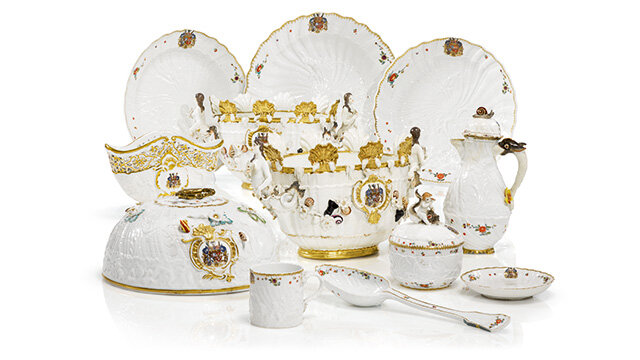

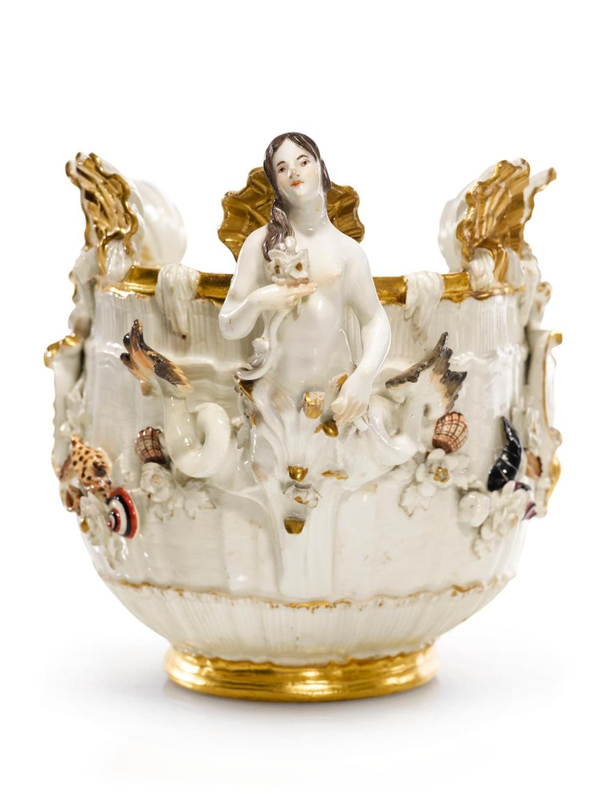
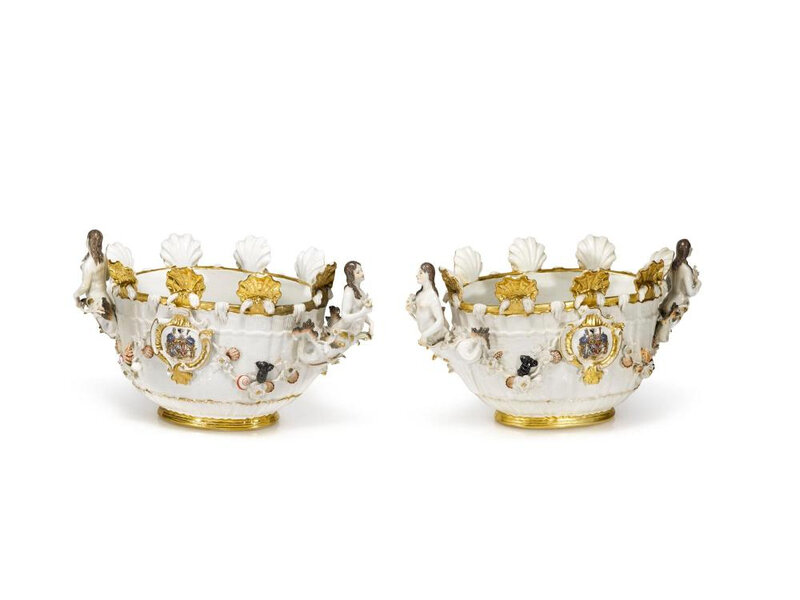

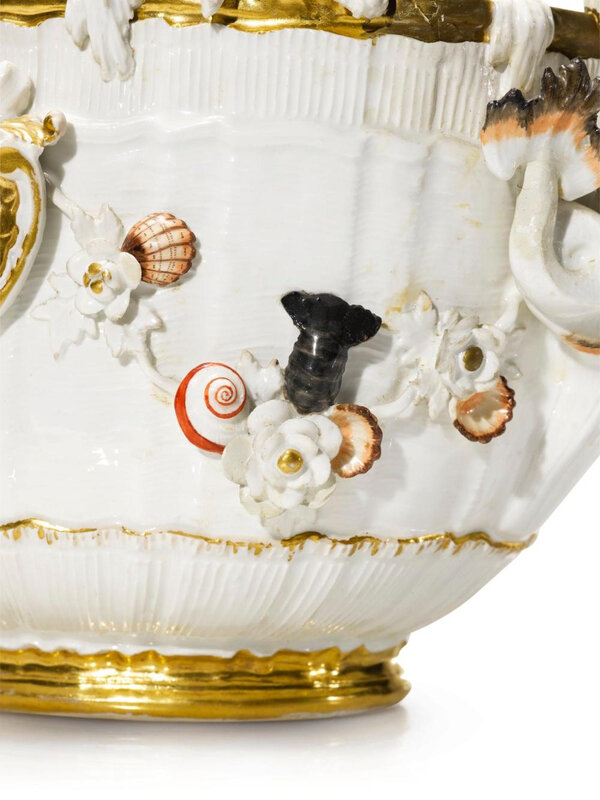
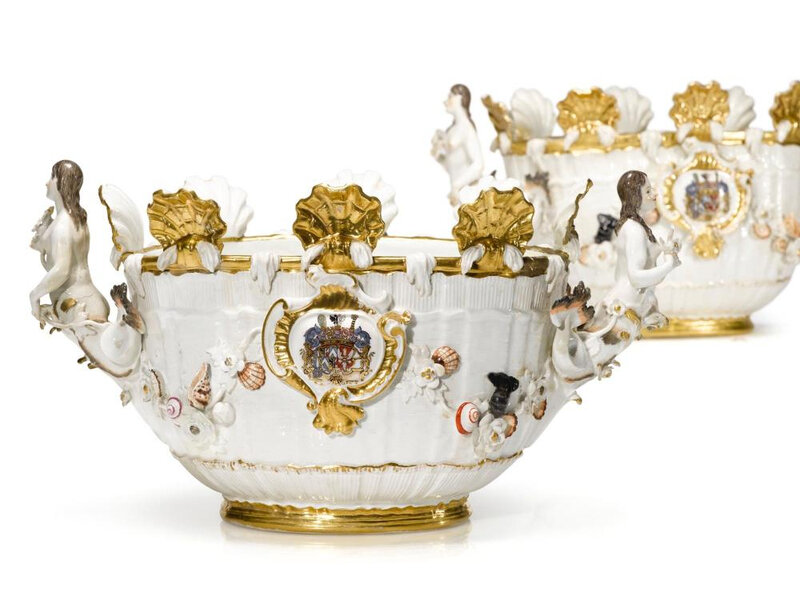


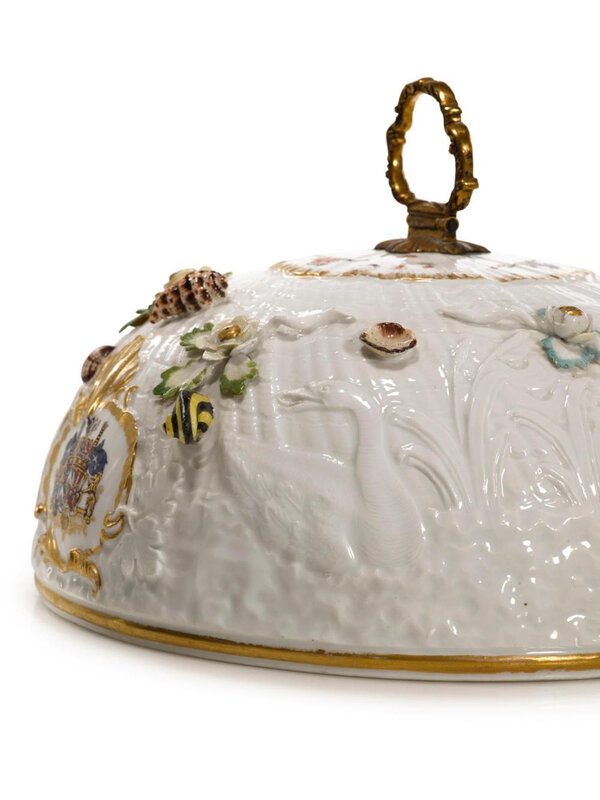

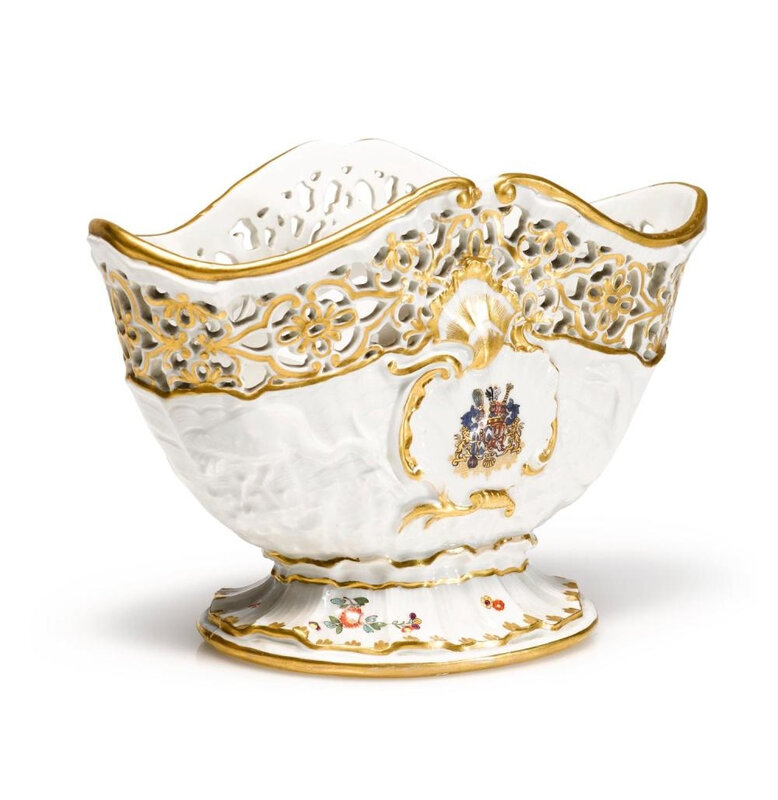




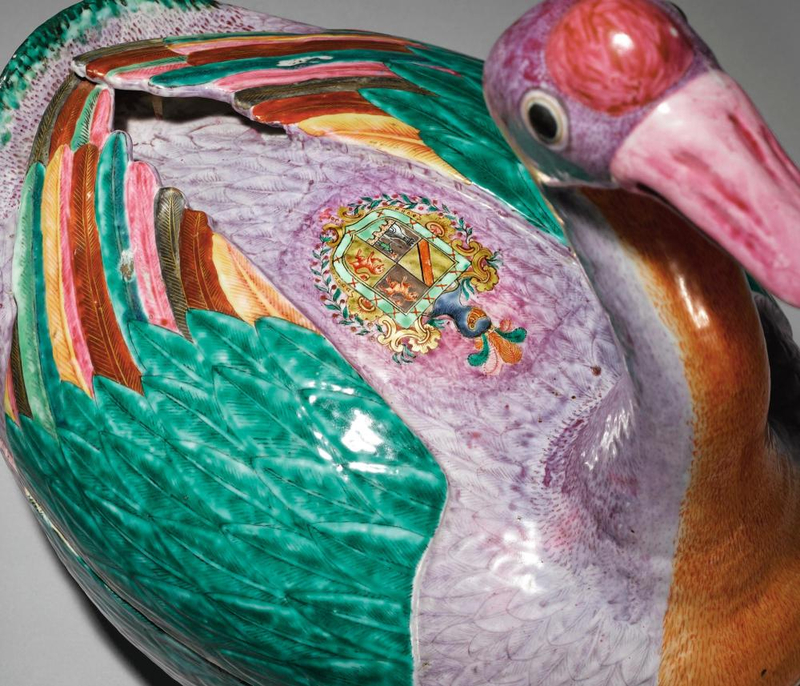
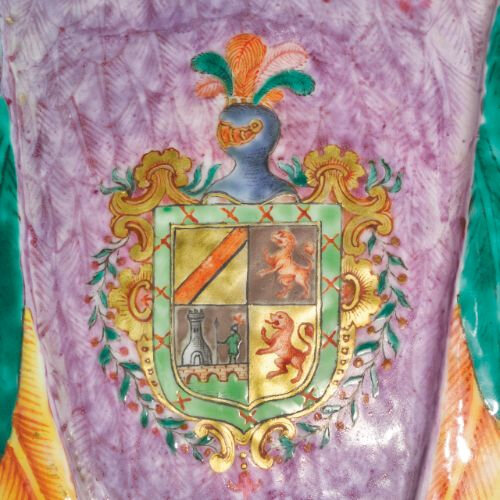

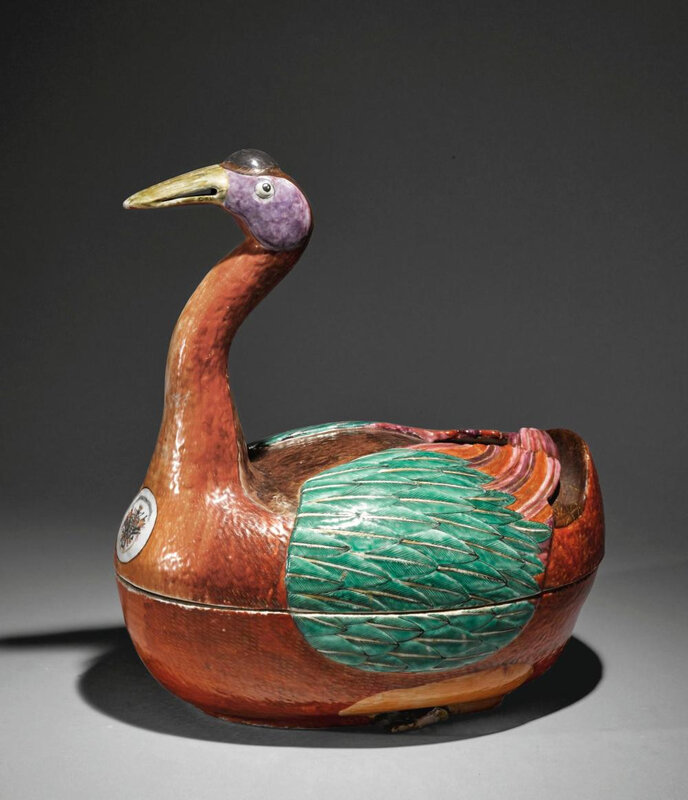

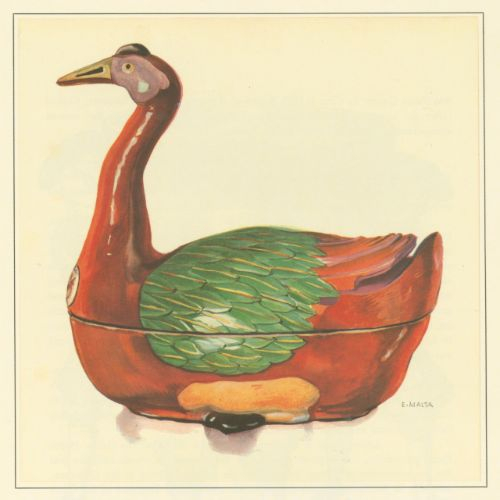

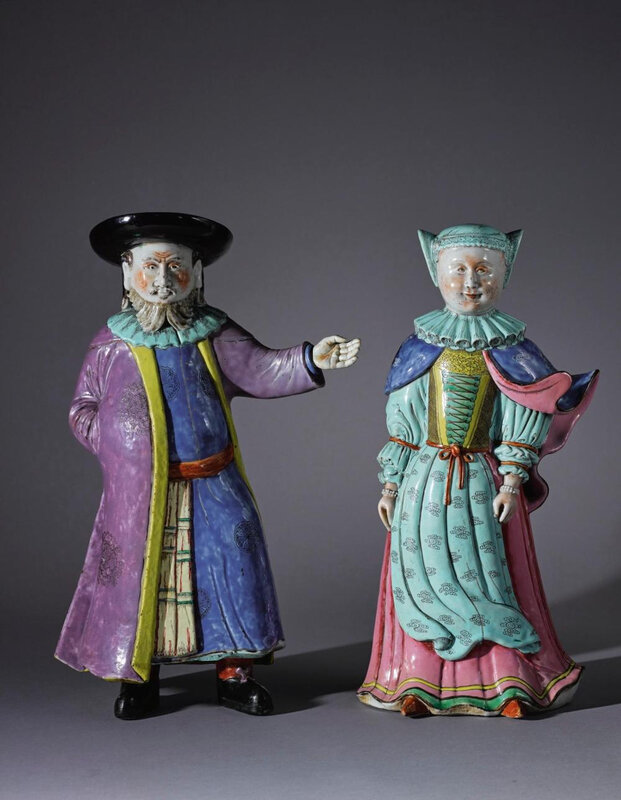

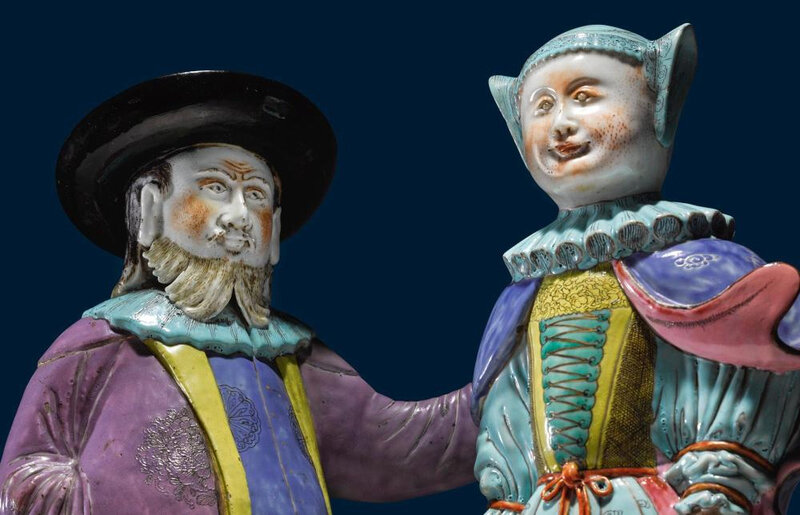
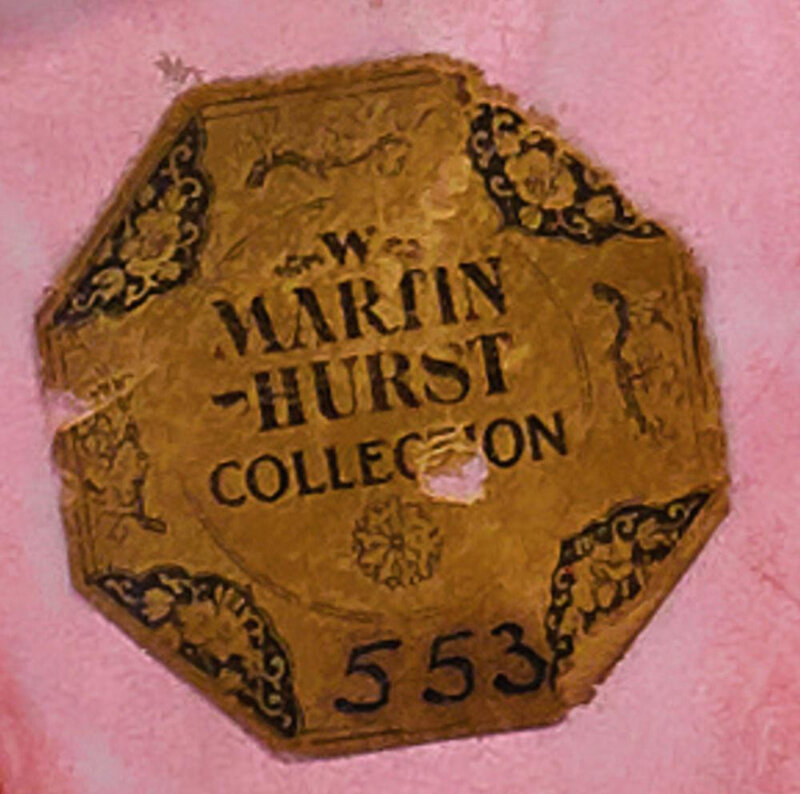
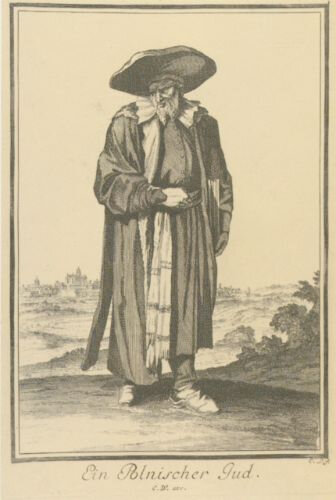
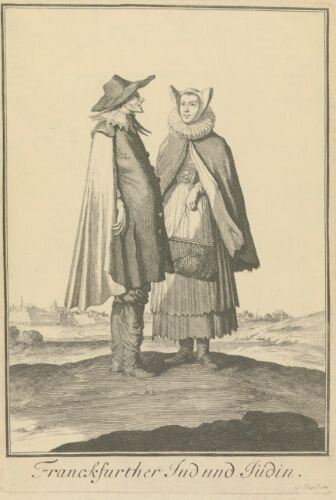

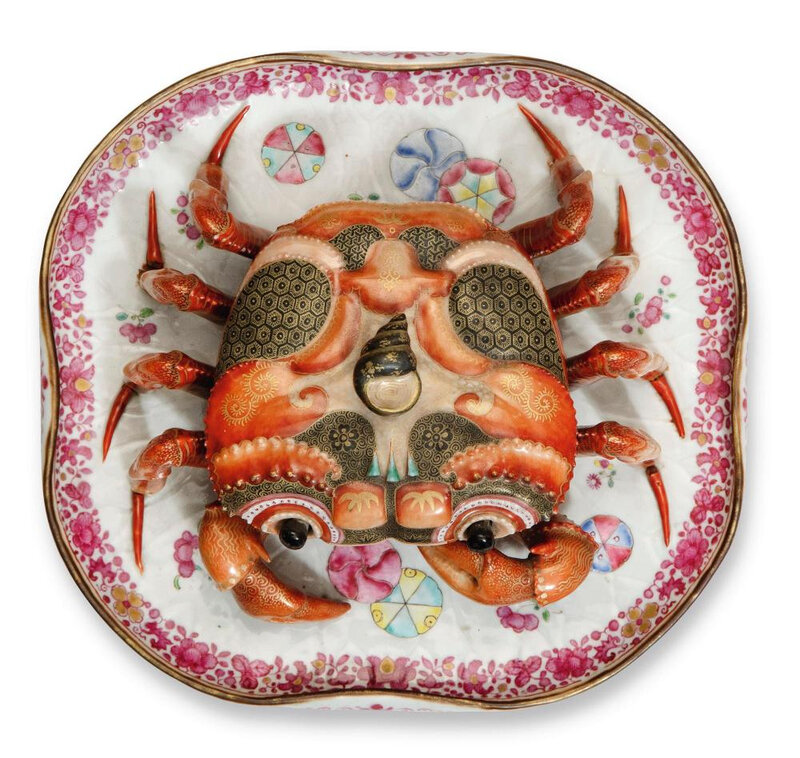
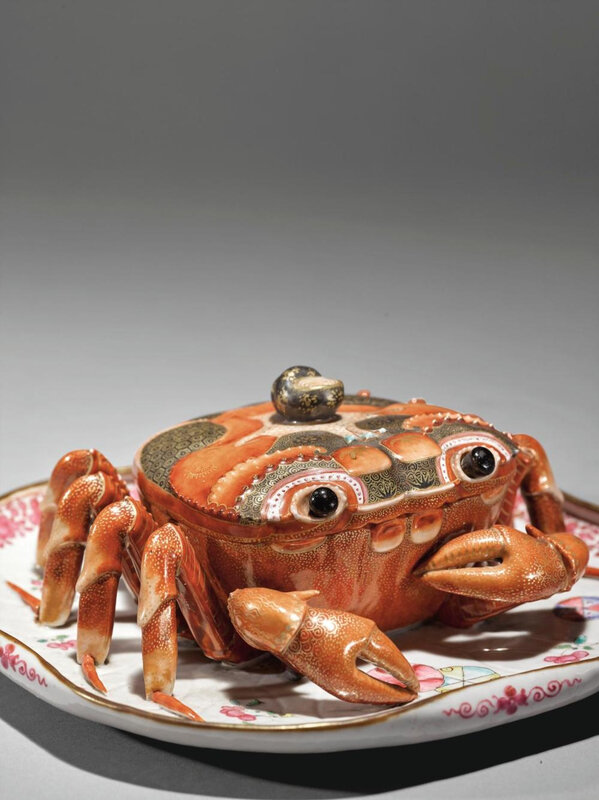



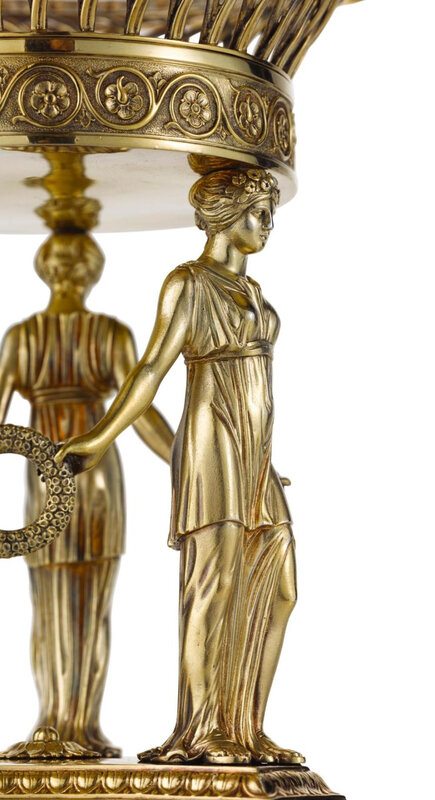
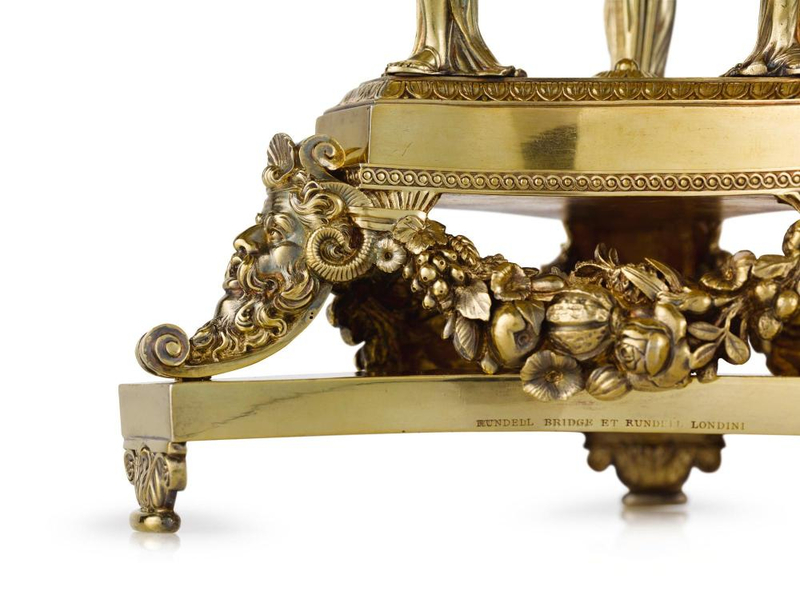
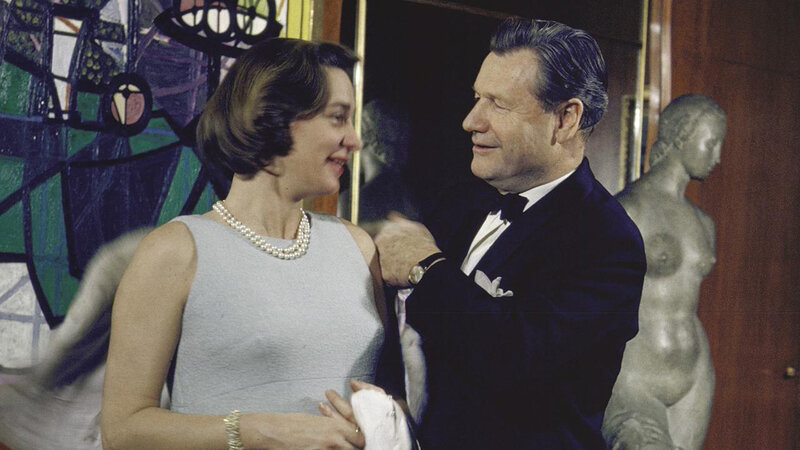


/http%3A%2F%2Fstorage.canalblog.com%2F28%2F56%2F119589%2F129494680_o.jpg)
/http%3A%2F%2Fstorage.canalblog.com%2F04%2F81%2F119589%2F128791640_o.jpg)
/http%3A%2F%2Fstorage.canalblog.com%2F73%2F16%2F119589%2F128381257_o.jpg)
/http%3A%2F%2Fstorage.canalblog.com%2F28%2F03%2F119589%2F126225626_o.jpg)